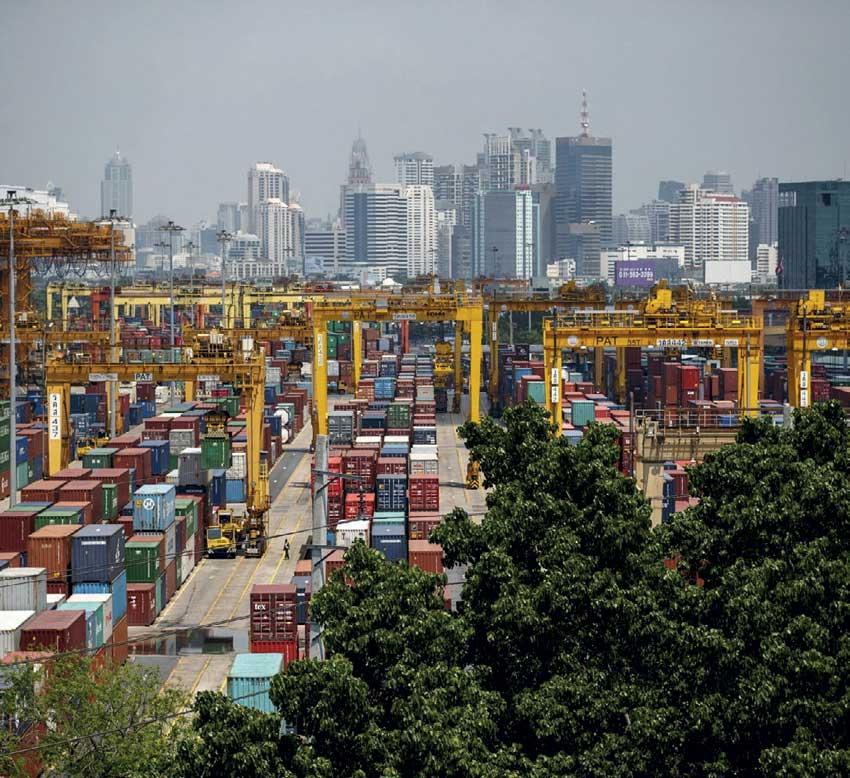Reply To:
Name - Reply Comment

 In a world where confrontational geopolitics and the concentration of production of crucial industrial components like semiconductors and medical supplies in particular locations are high, the call for self-reliance has become a political stampede.
In a world where confrontational geopolitics and the concentration of production of crucial industrial components like semiconductors and medical supplies in particular locations are high, the call for self-reliance has become a political stampede.
Politicians and populists around the world have captured nativist fears about reliance on others for everything from food to COVID-19 vaccines to urge that production be brought home. The danger of a lurch towards global autarky is real.
Govt. interference
The case for government interference in the efficient operation of global supply chains is minimal. Producing masks, hand sanitisers and ventilators to top-up imports during a global shortage makes sense.
Restricting exports of those supplies to other countries, as many have done and continue to do, makes no sense at all if critical domestic needs have been met. Shortages will not be filled by imports when others are also restricting exports.
The increasingly protectionist Indian Prime Minister Narendra Modi’s call to be ‘vocal for local’, at a time when his country needs all the international help that it can muster; the security review of supply chains by the Biden administration; the Australian government’s push for supply chain ‘diversification’; the Japanese government’s subsidies to encourage supply-chain onshoring; the EU’s declaration that it will double chipmaking capacity and achieve self-sufficiency in battery making; China’s ‘dual circulation’ strategy to insulate the domestic economy: all threaten an open, prosperous and secure international economy.
Nowhere is the damage of the self-sufficiency mindset to the economy and health security seen more starkly than in the approach to COVID-19 vaccination strategies. Restrictions on vaccine exports from the United States and the European Union have withheld vaccine supplies from millions whose vaccination would have helped secure global health outcomes, while vaccines have gone unused. Vaccine patent protectionism denies billions of people protection against COVID-19 and leaves the world vulnerable to virus mutation and continuing health risks.
In Australia, the mindless quest for self-sufficiency in vaccine production has delayed and led to a shambolic vaccination rollout. This was, first, a consequence of support for the development of a (failed) local vaccine programme and, second, the opting for an inferior vaccine, importantly because it could be locally produced, while technologically advanced alternatives required importing. Both health authorities and politicians have been less than candid about the decision-train that favoured self-sufficiency over effectiveness and led to economically costly, inferior health outcomes.
Reshoring
Claims that the COVID-19 pandemic would spell the end of global supply chains, and that there would be a massive ‘reshoring’ of international production back from developing countries (including China) to developed country markets were vastly overstated. Global supply chains have largely remained intact, with more intensive use of communications technology underpinning their resilience and competitive efficiency.
The reactions over supply chain insecurity partly reflected inadequate understanding of the multiple shocks generated by COVID-19. Worries about global supply chain resilience were fuelled by overreaction to the initial negative supply shocks and positive demand shocks, and anxiety about China’s reliability. None of these worries were fatal.
But the companies involved in delivering along global supply chains were not shaken. They had largely struck the balance between efficiency and risk management before the COVID-19 outbreak.
Although the pandemic and recession have caused much speculation about the future of foreign investment and global supply chains in Asia, the change in the foreign investment and international production landscape seems likely to be less than politicians and others have supposed, David Dollar argues in our lead article this week.
Despite the disruptions of the US–China trade and technology war, Dollar says, ‘US trade data shows only a small decline in imports from China (3.6 percent), despite 25 per cent tariffs and a sharp recession — Americans clearly still want Chinese electronic products, medical equipment and protective gear’.
Chinese FDI
What has taken a big hit is Chinese direct investment in advanced economies (the United States, European Union and Australia) where tightened security screening and investment restrictions have cut investment inflows by more than 50 percent between 2016 and 2019.
Meanwhile Chinese foreign direct investment in Southeast Asia has increased by nearly 50 percent over the same period and Chinese investment there is now on par with that of the United States and the European Union.
Nor has foreign investment into China fallen. Quite the opposite. In 2020, China was the largest recipient of foreign investment globally, for the first time outranking the United States. And, as Dollar observes, there has been no rush by US firms to leave China and re-shore investment home since ‘leaving would mean foregoing China’s lucrative domestic market’.
Instead, surveys of American firms in China suggest that the vast majority there are expanding at the same time as they are looking for low wage-cost production bases and extending global production chains elsewhere in Asia.
Global value chains have proved resilient because they are a very efficient form of industrial organisation. Multinational enterprises mainly contribute different types of intellectual property: patents, brands, trade secrets, managerial know-how and sales networks.
By one estimate, 85 percent of the value of the large firms in the S&P500 index consists of intellectual property. Operating globally enables these firms to use their assets in the largest market possible. For developing countries, including China, the spread of global production networks has helped accelerate and reinforce economic progress and security.
There are many worrying international policy trends that threaten international integration around the spread of global value chains. But in Asia, Dollar suggests, the conclusion of the Regional Comprehensive Economic Partnership (RCEP) agreement, comprising ASEAN, China, Japan, South Korea, Australia and New Zealand, is a positive step that should cement Asia’s place at the heart of many value chains and encourage direct investment in different directions.
Karl Sauvant notes, in another feature this week, that progress on the WTO’s Investment Facilitation Agreement by the 100 members involved in its negotiation accentuates the opportunity for positive development on investment arrangements like those in RCEP.
The problem, of course, is that the United States is not a participant in RCEP or the other regional arrangement, the Comprehensive and Progressive Agreement for Trans-Pacific Partnership, which might facilitate its engagement in the resumption of the region’s trade and economic growth post-COVID-19. And India has also turned inward, retreating from participation in RCEP.
Economic dynamism
It’s China’s economy that remains the engine of Asia’s continuing economic dynamism. That is so because Chinese firms and foreign firms operating in China are integrated into open international markets. China’s commitment to market systems and rules are central to its economic success and security. Whatever has changed in China, this fact has not. If it should, the confidence in China and the rest of the world in that commitment that sustains that success will fracture it and help tear it down.
Hopefully US recommitment to global trade and economic reform will build the foundation for United States economic re-engagement in Asia with China since that would be good for both the region’s prosperity and security.
(The EAF Editorial Board is located in the Crawford School of Public Policy, College of Asia and the Pacific, The Australian National University)